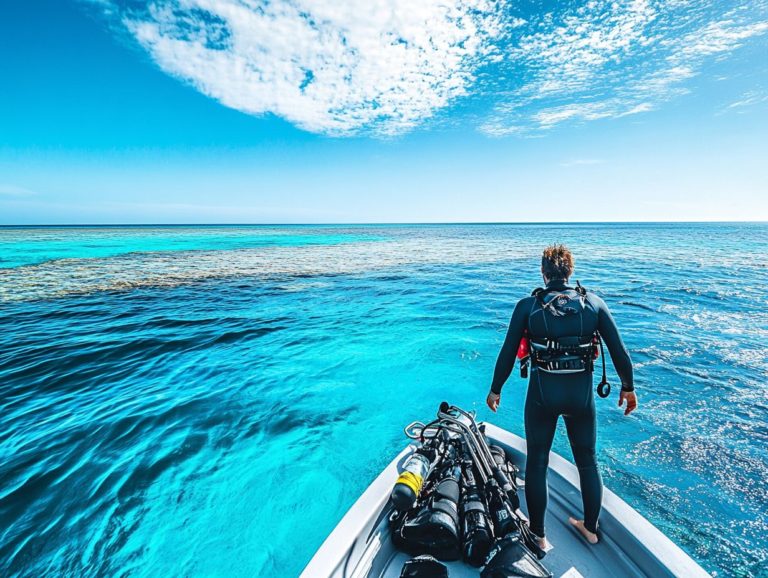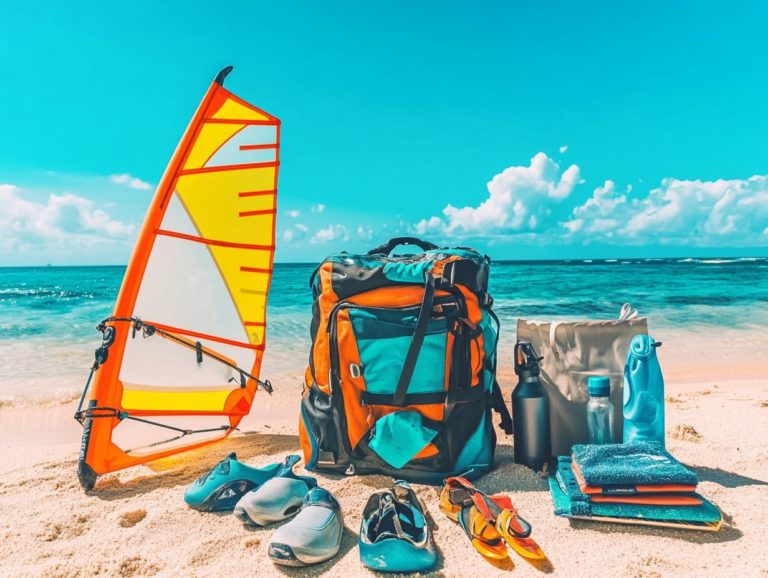Understanding Water Sports Regulations in California
California stands as a true paradise for water sports lovers, offering everything from riding the iconic surf to gliding through serene lakes in a kayak. Popular activities include **paddling safety** practices to ensure a safe experience.
Amidst this excitement lies a robust framework of **California laws** crafted to ensure both safety and sustainability.
This overview delves into the **boating regulations** in California, tracing their history, the variety of sports they encompass, licensing requirements, **safety guidelines**, and enforcement protocols.
Whether you re a seasoned pro or just dipping your toes into the water, grasping these regulations is vital for fully and responsibly enjoying the **California waterways** experience.
Contents
- Key Takeaways:
- Overview of Water Sports Regulations in California
- Types of Water Sports Regulated
- Licensing and Permits for Water Sports
- Stay Safe While Having Fun!
- Enforcement of Water Sports Regulations
- Updates and Changes to Regulations
- Frequently Asked Questions
- What are the water sports regulations in California?
- Do I need a license to participate in water sports in California?
- What is the California Boater Card?
- Are there any age restrictions for participating in water sports in California?
- Can I drink while participating in water sports in California?
- What should I do if I see someone violating regulations?
Key Takeaways:
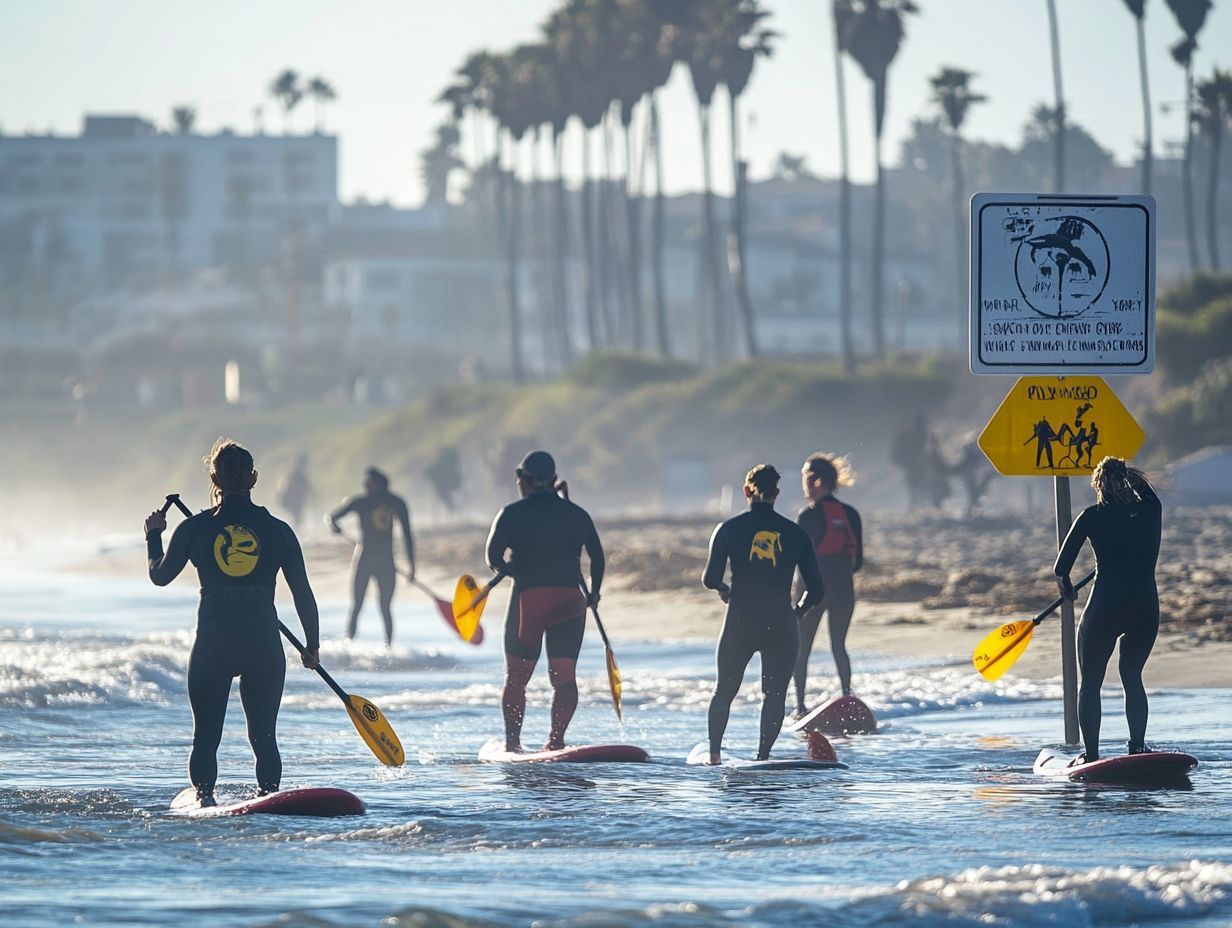
- Always wear your life jacket!
- Water sports regulations in California aim to ensure the safety of participants and preservation of the environment, including adherence to **required safety equipment**.
- Popular water sports such as surfing, **recreational boating**, and jet skiing require proper licensing and permits in California.
- To comply with regulations and avoid **boating penalties**, water sports enthusiasts must follow safety measures, obtain necessary permits, and stay updated on any changes to regulations.
Overview of Water Sports Regulations in California
In California, the regulations governing water sports play a vital role in ensuring your safety and following the rules while you revel in the state’s pristine waterways. These regulations cover a broad spectrum of laws, primarily enforced by the Division of Boating and Waterways, all designed to protect both participants and the aquatic environment.
They tackle essential aspects such as boating safety education, equipment requirements, and environmental conservation efforts. Familiarizing yourself with these laws can greatly enhance your outdoor recreational experience, making it not only enjoyable but also responsible for everyone involved.
History and Purpose of Regulations
The history of water sports regulations in California is deeply intertwined with the important goal of enhancing safety and safeguarding the state s distinctive aquatic environments from the impacts of unregulated recreational activities. Concerns over boating under the influence and safety equipment compliance have only added to this narrative.
As recreational boating surged in popularity during the 20th century, the alarming rise in accidents and fatalities compelled lawmakers to take decisive action. They established a framework that addressed these urgent issues, implementing regulations governing alcohol consumption on the water to curb instances of impaired operation a leading factor in boating accidents.
The state also introduced mandates for life jackets and other essential safety gear as a proactive measure to reduce risks and encourage responsible boating practices. These regulations are continually evolving to ensure your safety and enjoyment!
Types of Water Sports Regulated
In California, you ll find an impressive range of water sports, all carefully regulated to promote safety and environmental stewardship.
Activities like kayaking, paddleboarding, and recreational boating whether powered by motors or human effort come with specific regulations designed to cater to their distinct features.
List of Popular Water Sports Covered
Some of the most popular water sports governed by California regulations include kayaking, paddleboarding, waterskiing, and operating personal watercraft. Each of these activities has its own set of safety requirements and compliance guidelines that you should be well aware of.
To fully enjoy these thrilling experiences, it s essential for you to familiarize yourself with the specific rules that apply to each sport, including paddleboard safety and lifejacket laws.
- For kayaking, make sure you’re wearing a Coast Guard-approved life jacket it’s not just a suggestion; it s mandatory. Carry a whistle or a signaling device for safety.
- In terms of paddleboarding, while it might seem straightforward, you still need to adhere to buoyancy regulations and be mindful of the weather conditions around you.
- Waterskiing requires a spotter in addition to your safety gear. If you’re operating a personal watercraft, you must complete a safety course and display proper registration.
By understanding and adhering to these safety measures, you can significantly enhance your enjoyment while minimizing risks on the water, especially concerning visibility requirements and safety precautions.
Licensing and Permits for Water Sports
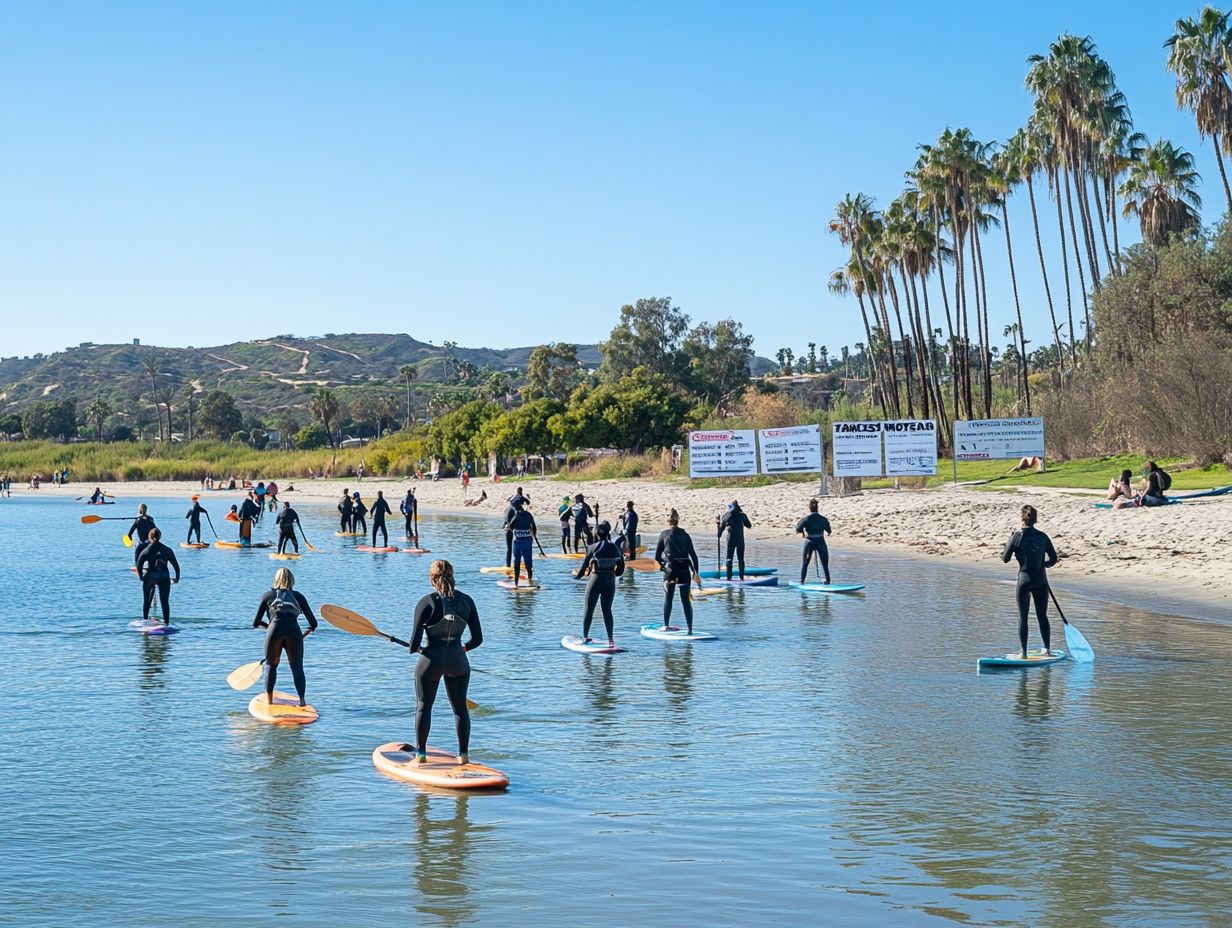
To engage in regulated water sports in California, you’ll need to secure the appropriate licensing and permits. This includes obtaining either a boating license or the California Boater Card, which shows your commitment to understanding and complying with boating regulations.
The application process for obtaining a boating license or California Boater Card comes with specific requirements designed to ensure you know the safety guidelines and regulations governing water sports.
This essential process involves completing a state-approved boater safety course. You must also demonstrate practical boating skills and knowledge of local boating laws.
It s essential to grasp why these rules matter! You may need to submit identification and proof of residency as part of your application. This ensures you are compliant and ready to navigate safely on California s waterways.
Stay Safe While Having Fun!
When indulging in water sports in California, act now: adopting strict safety measures is your best defense on the water! These measures encompass essential practices and mandatory safety equipment.
Life jackets are not just accessories; they are crucial for safeguarding everyone involved in activities like paddling and boating. Prioritizing these measures ensures a secure and enjoyable experience for all participants, especially during summer boating activities.
Equipment and Training Guidelines
Equipment and training guidelines for water sports participants in California are crafted to prioritize your safety and awareness.
These guidelines ensure you are not only equipped with essential safety gear like life jackets and signaling devices, but also fully understand the importance of staying attentive while on the water.
You are encouraged to engage in comprehensive training that covers vital skills and safety practices. This training reinforces the necessity of being acutely aware of your surroundings and fellow water users, cultivating a safety-first mindset.
By being both visible and knowledgeable, you significantly reduce the risk of accidents, enhancing your enjoyment and protection as you dive into these exhilarating activities.
Enforcement of Water Sports Regulations
The enforcement of water sports regulations in California is essential for preserving safety and ensuring compliance. State police diligently monitor adherence to boating regulations and impose penalties for violations to discourage unsafe practices.
This vigilant oversight helps create a safer environment for all enthusiasts on the water.
Penalties for Violations
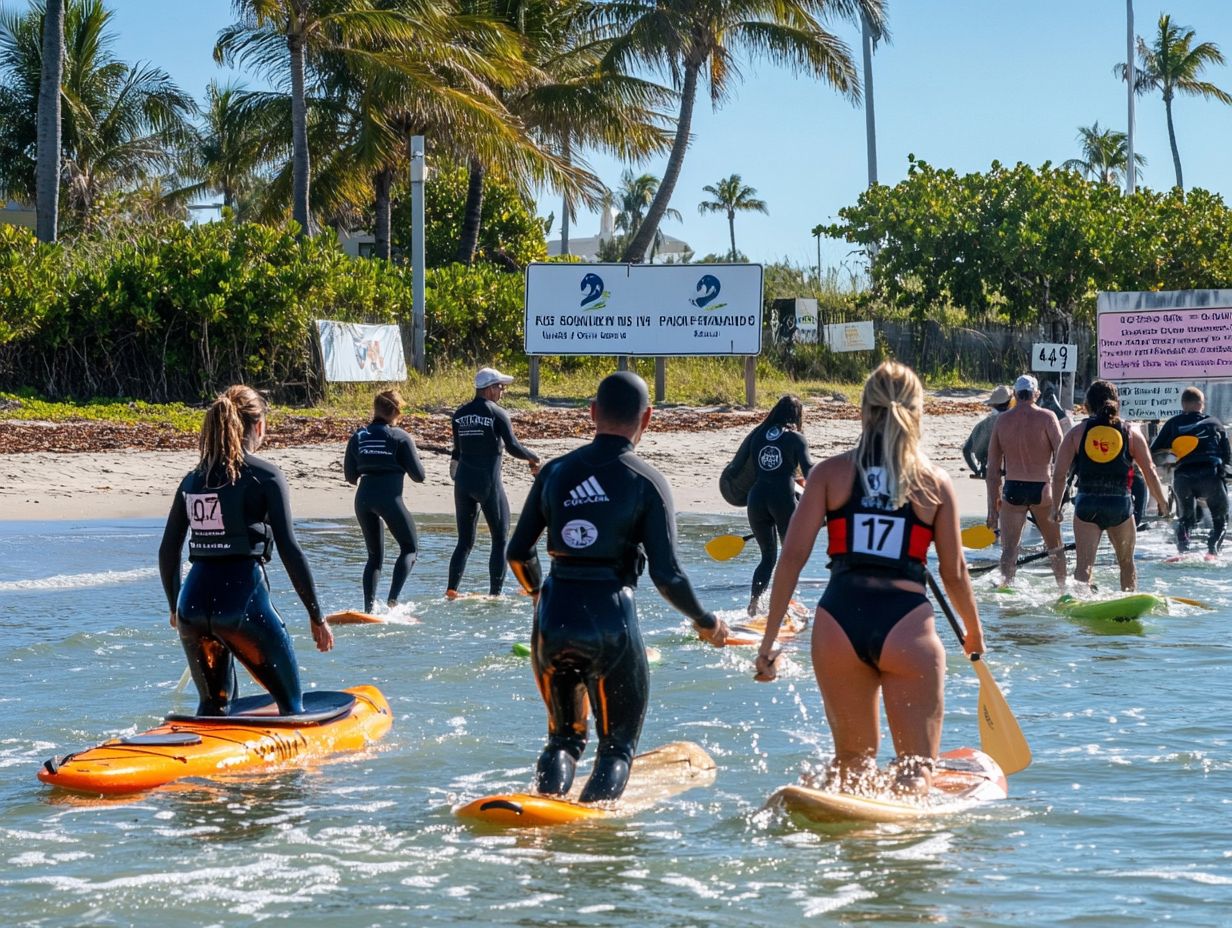
Penalties for violating water sports regulations in California can vary significantly, with serious repercussions for infractions like operating under the influence of alcohol or neglecting essential safety guidelines. Act now to avoid these penalties! Safety on the water is crucial.
These violations could result in hefty fines, points added to your driver’s license, and even the suspension of your boating privileges. The enforcement of boating laws is taken seriously, underscoring a commitment to safety on the water. If you’re found in breach of these regulations, you may face increased scrutiny, which can lead to harsher penalties for repeat offenses.
Understanding the range of penalties associated with boating violations is not just informative for recreational enthusiasts; it highlights the importance of following safety guidelines, ensuring that everyone can enjoy a safe and memorable experience on the water.
Updates and Changes to Regulations
Updates and changes to water sports regulations in California are crucial for you to effectively navigate new challenges, including managing boating during different seasons and preventing the spread of plants or animals that harm local ecosystems, such as the Zebra and Quagga mussels.
By staying informed about these regulations, you can contribute to the ongoing safety and ecological balance of the state’s waterways.
Recent Updates and Future Plans
Recent updates to California’s water sports regulations exemplify a commitment to continuous improvement, with plans on the horizon aimed at enhancing boating regulations and safety measures to better protect participants and the environment.
This approach ensures your safety while enjoying water activities and reduces the impact of human activity on local ecosystems. Officials are placing a strong emphasis on the strict enforcement of existing safety protocols, such as life jacket requirements, including the use of Coast Guard-approved personal flotation devices (PFD) and speed limits in densely populated areas.
Upcoming initiatives will introduce educational programs focusing on boating safety education and paddler awareness that highlight the importance of environmental stewardship among water sports enthusiasts, encouraging practices that help preserve water quality and wildlife habitats. By promoting safety and conservation, we can make California s waterways exciting and safe for everyone!
Frequently Asked Questions
What are the water sports regulations in California?
Water sports regulations in California are laws and rules that govern the use of waterways and activities such as boating, swimming, and water skiing. These regulations are in place to ensure safety and protect the environment.
Do I need a license to participate in water sports in California?
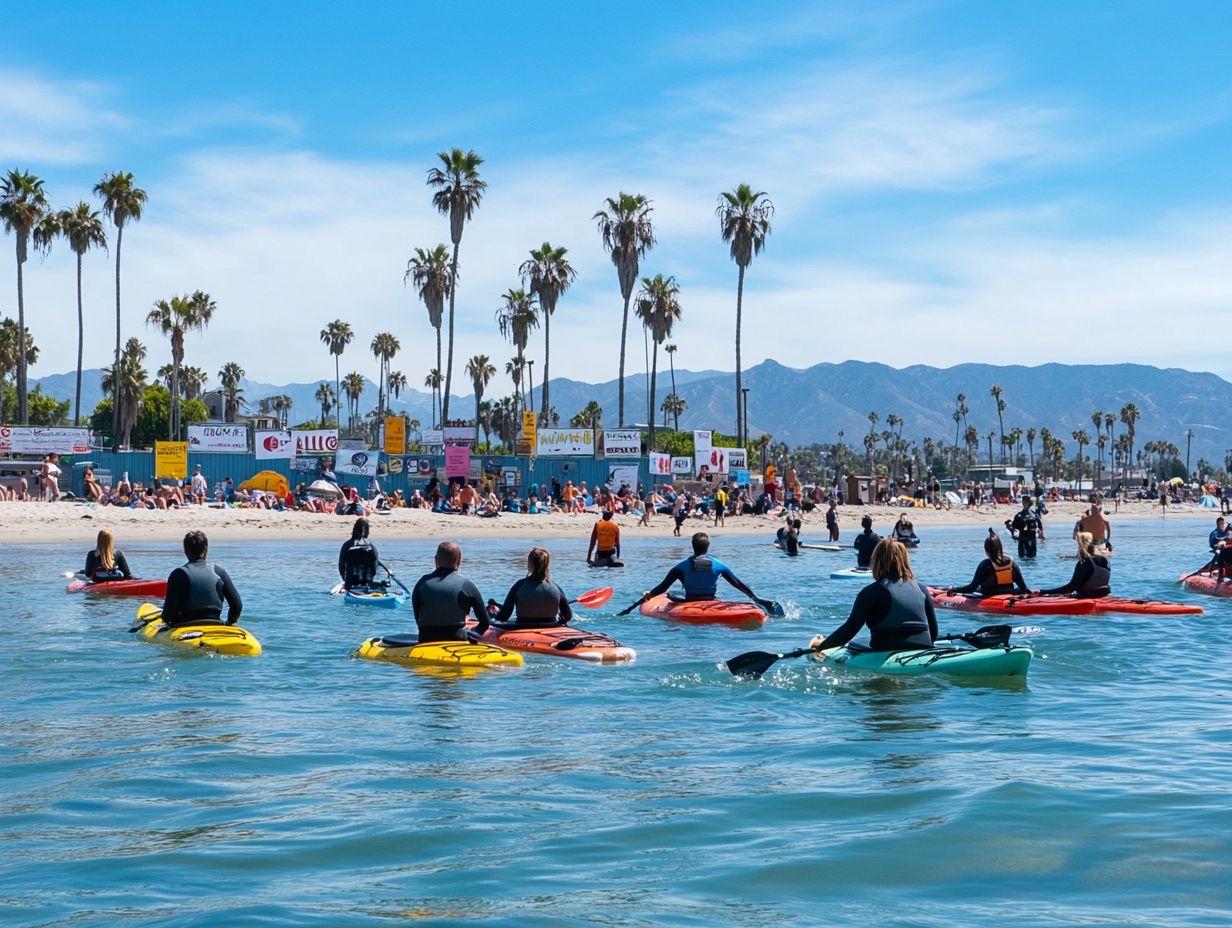
It depends on the specific water sport and your age. Anyone operating a motorized vessel or personal watercraft must follow specific regulations to ensure the safety of operators and passengers alike and is required to have a California Boater Card, which is crucial for compliance with personal watercraft laws. Additionally, some water sports such as fishing and hunting may require a license.
What is the California Boater Card?
The California Boater Card is a state-issued identification card that is required for anyone operating a motorized vessel or personal watercraft in the state. It shows that the operator has taken and passed a boater safety course and is knowledgeable about water safety regulations.
Are there any age restrictions for participating in water sports in California?
Yes, there are age restrictions for certain water sports. To operate a jet ski or similar vehicle, you must be 16 or older.
Anyone under 12 must wear a life jacket on any vessel. Always check the specific regulations before diving in your safety matters!
Can I drink while participating in water sports in California?
No, it’s illegal to take part in water sports while drinking alcohol. This law applies to all types of vessels, including canoes and kayaks.
The legal blood alcohol limit for operating a vessel is the same as for driving a car. Stay safe and informed!
What should I do if I see someone violating regulations?
If you see someone breaking water sports regulations, report it to the authorities. You can also inform them about the rules and potential consequences.
Safety on the water is everyone’s responsibility, so let’s ensure a fun experience for all!

